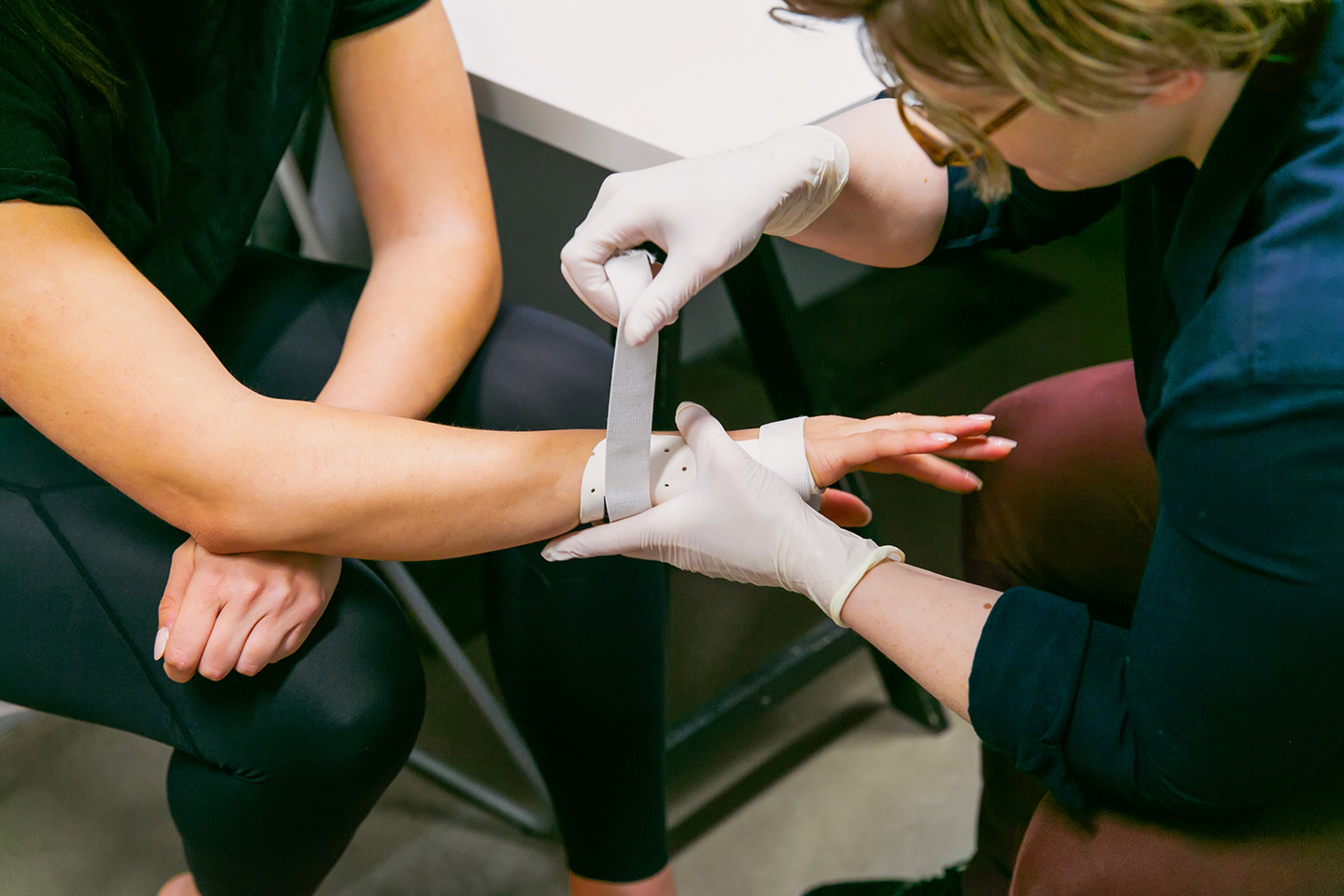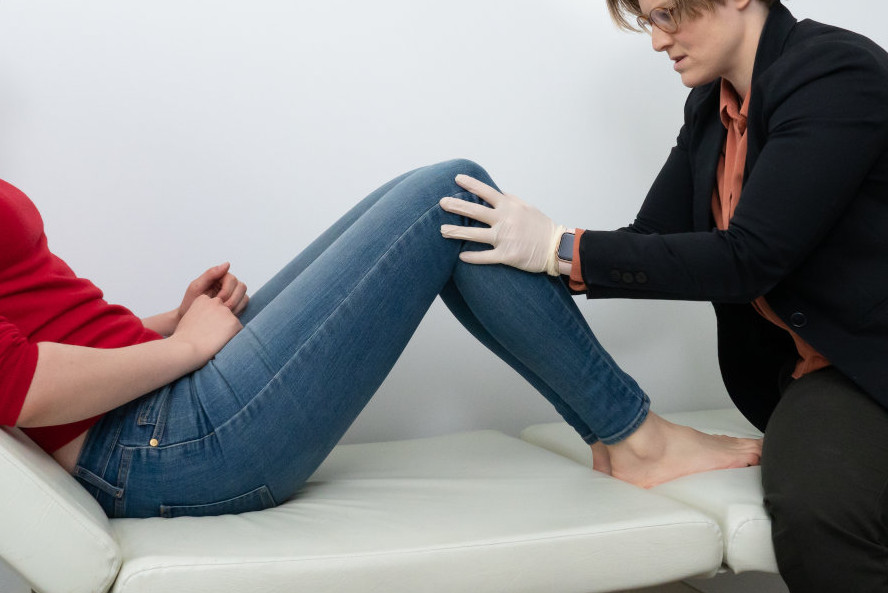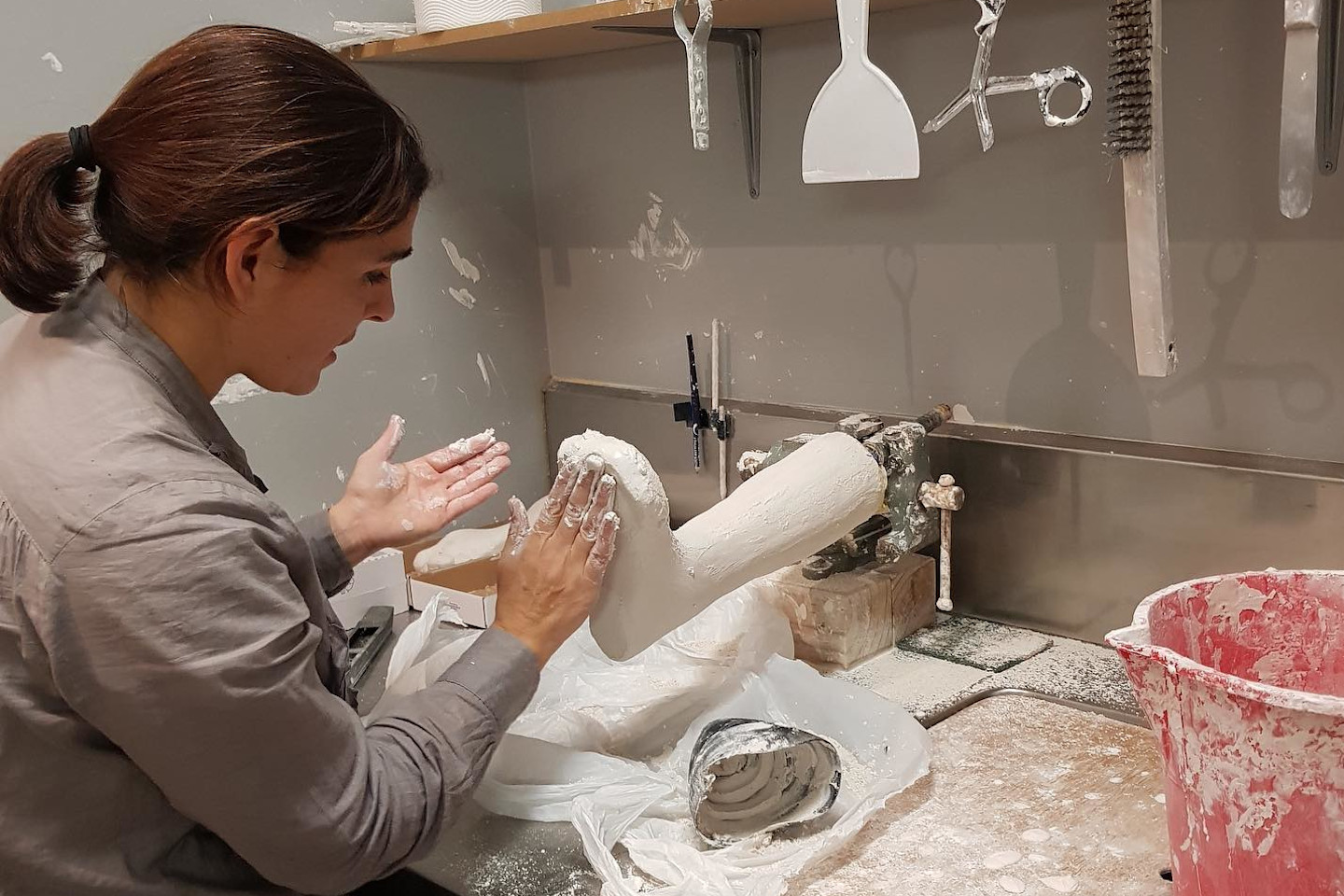Fracture Splinting Provider Melbourne
Splinting is a broad term encompassing various types of braces and orthoses. In most cases, it is intended for the treatment of fractures, with a focus on those occurring most frequently in the wrist.
At Orthotics Plus, we provide professional splinting services as part of fracture management, as mentioned, this is typically for wrist fractures (scaphoid and distal radius), however is sometimes for the fingers or elbows

What are Splints?
Splints are used to immobilise and support injured or fractured body parts, typically bones or joints. They help prevent further damage, reduce pain, and aid in healing.
Our splints are constructed using low-temperature thermoplastic, which is a type of plastic that becomes highly pliable when heated at low temperatures. It can then quickly solidify into the desired shape. It is a neutral colour.
This enables us to promptly address fractures without requiring patients to come back on a different day. Additionally, these splints are customised to fit the unique contours of the patient’s wrist or hand, depending on the specific area we are splinting.

What is the Difference Between a Splint and a Cast?
There are two primary methods for immobilising a fracture:
- One is the use of a fibreglass cast, which can either be waterproof or non-waterproof.
- The other is a removable splint, which we are discussing here.
The choice between the two often depends on guidance from the referring medical professional. In cases of severe or complex fractures, a cast may be specifically requested for more extensive immobilisation. However, for fractures that are not significantly displaced and are well-aligned, a removable splint can be a suitable option.
Sometimes, we discuss with the patient to determine the most appropriate choice. For instance, in the case of a child who may be tempted to remove the splint when they shouldn’t, we might recommend a cast as it provides more secure immobilisation.
The decision between a cast and a splint ultimately hinges on the severity of the fracture and the patient’s individual needs.


Splinting Services at Orthotics Plus
Referred from Emergency
When a patient sustains an injury, their initial point of contact is often the hospital. From there, they may receive a referral to external fracture management services, such as Orthotics Plus.
View our Melbourne locations here, all of which provide fracture management services.
Patients may also present to an emergency department, be then referred to a PPCC clinic for assessment and then referred to Orthotics Plus for management.
Same-Day Treatment
Our goal is to provide timely service. We strive to see patients on the same day as the injury, who then leave with the appropriate immobilisation.
During this visit, we will discuss the best course of action and then fabricate the splint on-site. This fabrication process typically takes around 30 to 45 minutes. Additionally, we encourage patients to contact us for any necessary reviews or adjustments in the following weeks if they experience any discomfort or rubbing.
Splinting involves making a tracing of the affected arm. From this tracing, we create a template, which is then used to cut the plastic material into the desired shape. Afterwards, we heat the plastic and mould it to conform to the shape of the arm or wrist.
Follow-Up Services
Typically a patient will wear a splint for 4-6 weeks and be booked in for appropriate follow-ups.

Why Choose Orthotics Plus for Fracture Management?
Orthotics Plus is staffed by qualified Orthotists and we have operated in Melbourne for over a decade.
- We work with hospitals, GPs and surgeons
- We welcome enquiries from individuals and businesses wishing to refer to us
- We have multiple clinic locations
- We prioritise urgent fracture cases to be performed on the same-day
- We accept referrals from PPCCs
Please use our clinic location page to contact the nearest clinic to you.

FAQ
Orthotics Plus is highly experienced and we make efforts to predict the pressure areas when fitting a splint.
As such, is it rare that that a patient will require any form of adjustment after the initial fitting.
If a patient is suitable for a splint, it is generally acceptable to gently remove it once a day for showering, while making sure not to use the wrist during this time.
Allowing water to run over the splint is a common practice. However, it’s important to note that in some cases, there may be situations where, for a specified period, we advise against removing the splint even for showering. During such times, the splint should be worn continuously, including while sleeping.
Nevertheless, the general rule of thumb is to remove it for showering.
If patients are allowed to remove the splint once a day for showering, they can effectively keep their arm clean.
Additionally, since the splint is made of plastic, they can wipe the inside of the splint with a soapy cloth, ensuring it’s thoroughly dried before putting it back on.
The splint may also be more suitable for patients seeking to go on holiday and swim, as it can get wet.
Furthermore, we usually provide patients with a small stockinette or a sleeve to wear on their arm, which helps prevent the splint and the arm from becoming sweaty or odorous.
It’s worth noting that there’s typically no need to use moisturiser in this situation, as it can create excess moisture within the splint.